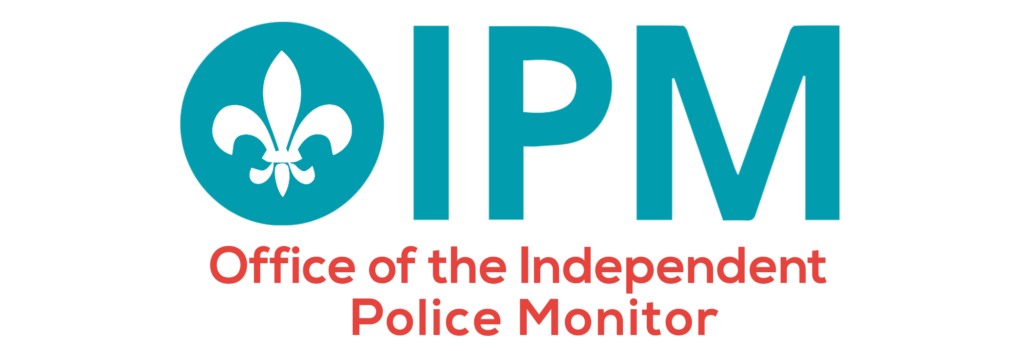The Beginning of Police Montioring
 From the 1980’s to the mid 1990’s the New Orleans Police Department made national headlines for a variety of scandals including murders, rapes and robberies. The Justice Department threatened to bring civil actions against New Orleans for a pattern of rights violations by the NOPD. As a result, Mayor Marc Morial hired an outside Police Chief, Richard Pennington, to clean up the NOPD and begin instituting reforms.
From the 1980’s to the mid 1990’s the New Orleans Police Department made national headlines for a variety of scandals including murders, rapes and robberies. The Justice Department threatened to bring civil actions against New Orleans for a pattern of rights violations by the NOPD. As a result, Mayor Marc Morial hired an outside Police Chief, Richard Pennington, to clean up the NOPD and begin instituting reforms.
As a part of these reforms, in the early 2000s, Mayor Marc Morial’s Police-Civilian Review Taskforce whose mission was to evaluate the creation of a citizen review board to consider complaints against police officers. This taskforce included public safety advocates and community leaders. It met 12 times over 15 months and researched over 100 US cities with some form of civilian oversight of police. Their research found that the oversight model with the best success rate is a police monitor. Creation of an Independent Police Monitor’s Office was the Taskforce’s number one recommendation to improve police-community relations. However, the recommendation was not immediately put into effect.
Following the devastation of Hurricane Katrina, in 2006 James Carter was elected to the first New Orleans City Council seated after the storm. Due to his leadership and in his role as Chairman of the newly created City Council Criminal Justice Committee, he played the lead legislative criminal justice reform role in establishing the Independent Police Monitor (IPM) as a division of the Office of Inspector General. The IPM was created to protect citizens from police brutality and misconduct. Councilmember Carter was visionary in implementing progressive criminal justice reform, as he also ushered in the VERA Institute of Justice alternatives to incarceration initiative, Ceasefire program, Court Watch NOLA and legal protections for the Mardi Gras Indian Culture.
On July 10, 2008, the ordinance creating the Independent Police Monitor’s Office was passed unanimously by the New Orleans City Council and signed into law by Mayor C. Ray Nagin on July 18, 2008. On October 4, 2008, New Orleans voters overwhelmingly made the office permanent by enshrining the authority for the office in the charter. On August 11, 2009, the first Police Monitor and Deputy Monitor were appointed, and the OIPM began operations period.
History of Police Oversight
U.S. police departments primarily function to reduce and identify crimes and criminals, not to replace the judiciary system; however, as seen in a multitude of cases of excessive police force and violations of civil rights, the police often overstep this boundary. Such cases raise the question of who should regulate the police.
Initial attempts at police oversight belonged to mayors and other elected officials, which normally led to corruption within the police force. During the Progressive movement, police oversight was reallocated to everyday citizens that served part-time, often without pay. As a result, the commissions were generally unsuccessful again, due to little knowledge of police issues and time restraints. Police departments became independent entities with no accountability to the public, particularly to minority groups and impoverished individuals. The civil rights movement of the 1960s and 70s raised awareness of police misconduct against socially excluded populations, and many cities have made efforts to create civilian review boards to conduct investigations into complaints about the police. These organizations suffered similar fates of previous attempts, due to a lack of resources and knowledge about policing.
Incidents in the 1990s, such as the beating of Rodney King in Los Angeles and the shooting of Amadou Diallo in New York City, sparked some experimentation with models of police oversight. Evidence of police cover-ups and of officers’ “closing the ranks” suggested the need for an independent entity to oversee the police. As a result, Los Angeles’ executive branch appointed Special Counsel to act as the independent monitor of police and required the county’s police to provide full access to records relevant to his investigations. The monitor publishes frequent reports on the police’s effectiveness in controlling police misconduct and focuses on helping the department change policy or training to end use of excessive force. The monitor’s presence has coincided with a great reduction in complaints of excessive force, deaths of both suspects and officers, and a reduction in the number of lawsuits against the Los Angeles police force, while the number of arrests has remained relatively consistent.
In Seattle, a different approach in the form of an independent investigator has been implemented. Seattle’s Office of Professional Accountability is a team of investigators, headed by a civilian director, to investigate complaints about police misconduct and recommend sanctions to the Chief of Police. The office is also responsible for reporting to the mayor and City Council on the policies of the police department and recommending approaches for increasing accountability in the city’s police force. From the OPA’s creation in 1999, contact with the OPA’s office has increased steadily, but overall citizens’ complaints and contact with the OPA have regarded less serious offenses. However, from 2009 to 2010, the OPA encountered an increase in allegations of excessive force against the police department.
New York City established their current Civilian Complaint Review Board in 1993 with subpoena powers and the power to recommend discipline in confirmed cases of police misconduct. After the Abner Louima case in 1997, the board received increased funding. With more investigators and managers, the review board has been able to investigate complaints more fully and timely. The number of complaints taken has remained constant throughout the years.
